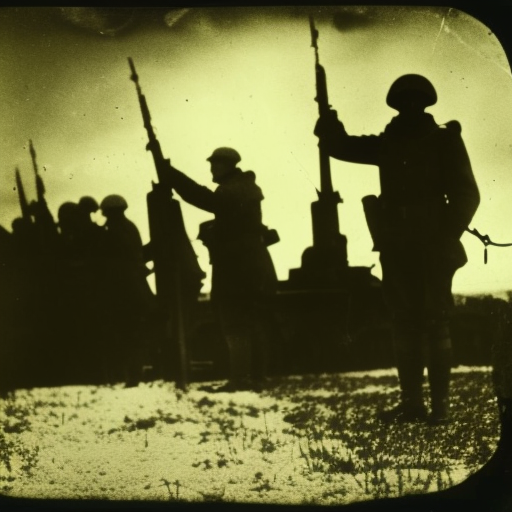Summary: Armistice of 11 November 1918
The Armistice of 11 November 1918 marked the end of World War I, one of the deadliest conflicts in history. After four years of brutal fighting, the Allied powers and Germany agreed to a ceasefire, bringing an end to the hostilities on the Western Front. The armistice paved the way for the signing of the Treaty of Versailles, which officially ended the war and imposed harsh terms on Germany.
The Context
By 1918, World War I had reached a stalemate on the Western Front. Both sides had suffered heavy casualties and were exhausted from years of fighting. The entry of the United States into the war had tipped the balance in favor of the Allies, who were now pushing the German forces back. The German government, facing internal unrest and economic collapse, sought an end to the war.
The Negotiations
Negotiations for an armistice began in October 1918. The German government approached U.S. President Woodrow Wilson, who had outlined his vision for a just and lasting peace in his Fourteen Points speech. The Allies, led by France, Britain, and the United States, demanded Germany’s unconditional surrender and the withdrawal of German forces from occupied territories.
The negotiations were challenging, as both sides had different objectives and concerns. Germany wanted to secure more favorable terms, while the Allies were determined to hold Germany accountable for the war. Eventually, an agreement was reached, and the armistice was signed on 11 November 1918.
The Terms
The armistice contained several key provisions. Germany agreed to an immediate cessation of hostilities, with the withdrawal of its forces from the Western Front. The German army had to evacuate all occupied territories, including Belgium, France, and Luxembourg. The Allies were given control of strategic areas, such as the Rhineland and the bridgeheads across the Rhine.
Furthermore, Germany had to surrender a significant amount of military equipment, including aircraft, submarines, and heavy artillery. The German navy was interned in neutral ports, and the German U-boat fleet was handed over to the Allies. The armistice also required Germany to release all prisoners of war and allow for the repatriation of civilians.
The Aftermath
The armistice brought relief to war-weary populations across Europe. The news of the ceasefire was met with celebrations and a sense of hope for a better future. However, the armistice was only a temporary measure. Negotiations for a permanent peace began in early 1919 and culminated in the signing of the Treaty of Versailles.
The treaty imposed severe penalties on Germany, including territorial losses, disarmament, and massive reparations. These harsh terms, combined with the economic and political instability in Germany, would contribute to the rise of Adolf Hitler and the outbreak of World War II.
The Armistice of 11 November 1918 marked the end of a devastating conflict that had claimed millions of lives and reshaped the geopolitical landscape. It symbolized the triumph of the Allies and the beginning of a new era. However, the peace that followed would prove to be fragile, as unresolved issues and deep-seated resentments laid the groundwork for future conflicts.












